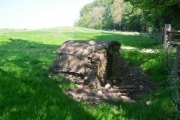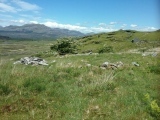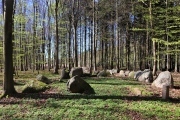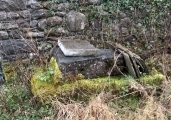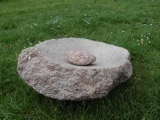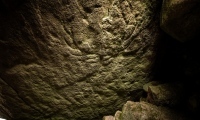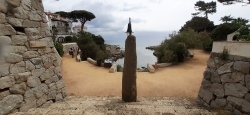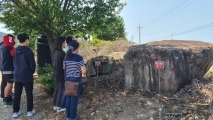Andy Burnham's Blog, page 170
June 8, 2021
Lady Well (Kirklington)
A holy well located at the south eastern corner of the now deserted medieval village of Yarnwick, The well house is in disrepair, although water can still be seen filling the well basin inside the well house, through the rubbish and rubble which has fallen in. The surrounding meadow with its wildflowers (at the time of our visit) was a pleasure to be in.
Published on June 08, 2021 09:44
June 6, 2021
Nant Pasgan Mawr Hut Circle
This hut circle is situated along an ancient trackway that leads from Bryn Cader Faner to Cwm Moch (valley of the pigs). The hut circle is visible to the north of the trackway over a dry stone wall. This is an upland landscape on the northern slopes of the Rhinogau mountains. The hut circle has an interior diameter of 7m and it is raised at its highest to 1m on the eastern side where the ground level slopes away.
Published on June 06, 2021 07:18
Flintinge Byskov Langdysse 2
A Langdysse (Long Barrow) in Maribo, 15 x 6,5 meters. The chamber has 8 uprights of which 3 are kerbstones. No capstone remaining. 20 kerbstones overall.
Published on June 06, 2021 03:19
June 3, 2021
Bryndyfan Standing Stone
Until 2014 this was a standing stone about 6' high by about 2' across forming the corner of a lean-to building on this farm in Bryndyfan, Carmarthenshire. It was destroyed accidentally by a tractor, the two halves of the stone now lie one on the other (with the top half uppermost) in the farmyard.
Published on June 03, 2021 08:37
June 1, 2021
Announcing the Megalithic Portal photo competition winners for June to Dec 2018
Continuing the catching-up of our photo competitions, we are delighted to announce the winners for the best images submitted to the Megalithic Portal in the second half of the year 2018 - voted for by you our visitors and contributors. Votes are still being counted on all photos submitted since then and we will be announcing more winners soon.
1st Prize: Callanish Kite Aerial Photograph by Hamish Fenton
2nd Prize: Cuween Hill by Connor Motley (Coin)
3rd Prize: Pisidian Antioch by David Morgan
View the photos below, along with a special tribute to Pete Cork (Umbra-Man) who is sadly no longer with us.
1st Prize: Callanish Kite Aerial Photograph by Hamish Fenton
2nd Prize: Cuween Hill by Connor Motley (Coin)
3rd Prize: Pisidian Antioch by David Morgan
View the photos below, along with a special tribute to Pete Cork (Umbra-Man) who is sadly no longer with us.
Published on June 01, 2021 07:43
Steinzimmer Anderlingen
A little private museum of the most interesting stones from a decades-long passion for collecting are on display in the showcases of the 'Steinzimmer' 'stone room'. This small local collection in Anderlingen, near Selsingen, Lower Saxony includes fossils and geological finds as well as some archaeological pieces from the recent and older cultural history of the region. Photo left: A grain grinding or quern stone - the grinding stone on top is a very rare discovery.
Published on June 01, 2021 04:22
May 31, 2021
Dunchraigaig Cairn
Hamish Fenton finds prehistoric carvings of red deer found in Scottish neolithic tomb, more in the comments on our page. Like the other Kilmartin cairns, Dunchraigaig is about 30m wide. But excavations in the 1800s showed it was quite an unusual monument. The cairn has three cists inside. The cist to the east contained only cremated bones. The central cist contained a full-length body on top of its cover slab, with cremated human bones inside and below this a layer of rough paving which revealed yet another body, in a crouched position.
Published on May 31, 2021 07:03
May 28, 2021
Menhir de Cala Pedrosa
Published on May 28, 2021 15:15
May 24, 2021
Pyeongji-ri dolmen
Gochang Harry-myeon is a dolmen located on the street in front of Surak Village in Gochang Harry-myeon, South Korea
Published on May 24, 2021 08:18
May 21, 2021
Coast Salish Stone Fish Weir
When the tide is low, you'll get a rare look at the rocky remnants of a fish trap created many centuries ago by local Coast Salish people, now preserved along the shoreline of Stanley Park, Vancouver. Two lines of Rock "Fences" both curved loosely away from the seawall. These were used to catch fish. At high tide, fish swam in through a small opening which the fishermen then closed off with a net or weir to trap the fish. Using hand nets they caught only the fish they needed, then set the rest free.
Published on May 21, 2021 01:57

